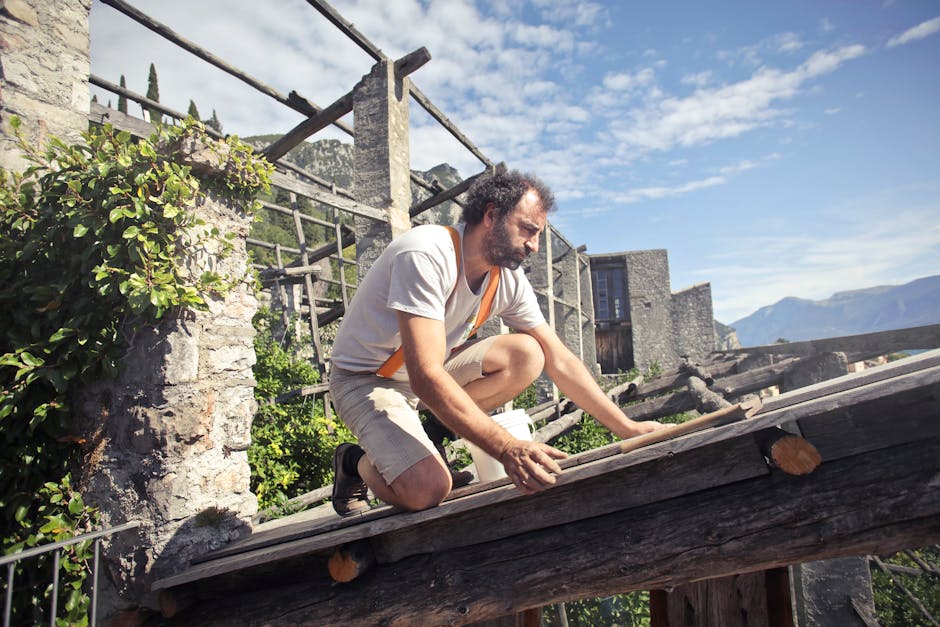Prepare yourself for storm season by ensuring your roof is up to the challenge. A strong, weather-resistant roof is your first line of defense against the unpredictable forces of nature. Don’t wait until it’s too late; look out for these six crucial signs that indicate your roof may not be ready to weather the storm.
1. The Importance of Regular Roof Inspections
Regular roof inspections are the cornerstone of effective maintenance and storm preparedness. By having your roof inspected annually by a professional roofing contractor, you can catch potential issues before they escalate into costly problems. From loose shingles to hidden leaks, a thorough inspection can uncover vulnerabilities that may compromise your roof’s ability to withstand harsh weather conditions.
During a roof inspection, experts examine the condition of your roof’s materials, flashing, gutters, and overall structure. They can identify weak points that need reinforcement and provide timely repairs to ensure your roof is in optimal condition. Prioritizing regular inspections is the first step toward ensuring your roof is storm-ready and capable of protecting your home and loved ones.
Neglecting roof inspections can lead to undetected damage that worsens over time, putting your home at risk during storms. By staying proactive and scheduling routine inspections, you can stay ahead of potential issues and fortify your roof against the elements. Don’t underestimate the power of a thorough roof inspection in safeguarding your property from storm damage.
2. How Weathering Can Wear Down Your Roof
Weathering is a gradual process that can significantly impact the integrity of your roof over time. Exposure to rain, sunlight, wind, and temperature fluctuations can cause roofing materials to deteriorate, leading to weakened protection against storms. From cracked shingles to faded finishes, weathering can leave your roof vulnerable to leaks, mold growth, and structural damage.
The effects of weathering are particularly pronounced in regions with extreme climate conditions. High humidity, heavy rainfall, and strong winds can accelerate the deterioration of roofing materials, hastening the need for repairs or replacement. Understanding how weathering affects your roof is essential for implementing proactive maintenance strategies to enhance its durability and resilience.
3. Common Signs of Roof Damage to Look Out For
Recognizing common signs of roof damage is key to identifying issues that may compromise your roof’s storm-readiness. From missing shingles to water stains on ceilings, visible indicators of roof damage should not be ignored. Leaks, sagging areas, and granule loss from shingles are red flags that warrant immediate attention to prevent further deterioration.
Interior signs of roof damage, such as peeling paint, musty odors, or daylight seeping through the attic, can signal underlying issues that require professional assessment. Ignoring these warning signs can result in extensive water damage, mold growth, and structural weakening, making your roof susceptible to storm-related destruction. Stay vigilant and address any signs of damage promptly to safeguard your home against severe weather conditions.
4. The Impact of Missing or Damaged Shingles
Missing or damaged shingles can compromise the protective barrier of your roof, leaving it susceptible to water infiltration and wind damage during storms. Shingles play a critical role in diverting water away from the roof’s surface and preventing leaks that can compromise your home’s interior. If you notice curled, cracked, or missing shingles, it’s essential to address these issues promptly to maintain the structural integrity of your roof.
Inadequate shingle coverage can create weak points where water can penetrate, leading to moisture damage, rot, and mold growth. Additionally, damaged shingles can detract from your roof’s overall appearance and reduce its curb appeal. By replacing missing or damaged shingles promptly, you can fortify your roof against storm damage and preserve the aesthetics of your home’s exterior.
5. Why Proper Roof Maintenance Is Crucial for Storm Season
Proper roof maintenance is crucial for ensuring your roof can withstand the rigors of storm season. Regular upkeep, including cleaning gutters, trimming overhanging branches, and removing debris, can prevent issues that may compromise your roof’s performance during inclement weather. By investing in routine maintenance, you can prolong the lifespan of your roof and enhance its ability to endure strong winds, heavy rain, and hail.
Maintenance tasks such as inspecting for signs of wear, sealing gaps, and reinforcing weak spots can reinforce your roof’s defense against storms. Proactive maintenance measures can address minor issues before they escalate into major problems, saving you time and money in the long run. By prioritizing proper roof maintenance, you can secure your home against storm-related damage and ensure peace of mind during severe weather events.
6. How Quality Roofing Materials Can Increase Storm Resistance
Investing in high-quality roofing materials is essential for enhancing your roof’s storm resistance. Durable materials such as impact-resistant shingles, metal roofing, and synthetic membranes can bolster your roof’s ability to withstand harsh weather conditions. When selecting roofing materials, prioritize longevity, durability, and weather resistance to optimize your roof’s performance during storms.
Quality roofing materials not only provide superior protection against wind, rain, and hail but also offer energy efficiency benefits and aesthetic appeal. Modern roofing technologies like reflective coatings and solar panels can further enhance your roof’s functionality and sustainability. By choosing top-tier materials and partnering with reputable roofers, you can fortify your roof against storms and elevate the overall quality of your home.







